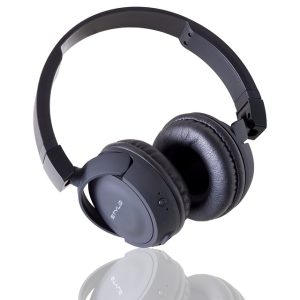The Transcription Process
 Transcription, the process of converting spoken language into written or typed form, is a crucial aspect of communication, documentation, and information management. Whether for legal proceedings, medical records, or content creation, transcription plays a vital role in making spoken words accessible in written form. This article delves into the intricacies of the transcription process, exploring the methods, challenges, and technological advancements that shape this essential practice.
Transcription, the process of converting spoken language into written or typed form, is a crucial aspect of communication, documentation, and information management. Whether for legal proceedings, medical records, or content creation, transcription plays a vital role in making spoken words accessible in written form. This article delves into the intricacies of the transcription process, exploring the methods, challenges, and technological advancements that shape this essential practice.
Understanding the Transcription Process
Preparation and Pre-Transcription
The transcription process begins with thorough preparation. This involves understanding the context, subject matter, and any specialised terminology relevant to the audio or video content. Additionally, transcriptionists must familiarise themselves with the speakers’ accents, speech patterns, and any background noise that could affect the accuracy of the transcription.
Transcription Techniques
There are two primary transcription techniques: full verbatim and intelligent verbatim. Full verbatim transcription captures every spoken word, including filler words, hesitations, and non-verbal expressions. Intelligent verbatim focuses on conveying the intended meaning while omitting unnecessary elements. The choice between these techniques depends on the specific requirements of the transcription task.
Manual Transcription vs Automated Transcription
Manual transcription involves a human transcriber listening to the audio or watching the video and typing out the spoken words. This method offers a high level of accuracy but can be time-consuming. On the other hand, automated transcription uses voice-recognition software and artificial intelligence to transcribe spoken words automatically. While faster, automated methods may lack the nuanced understanding and accuracy provided by human transcriptionists.
For more on this debate, refer to our article: The Pros and Cons of Voice-Recognition Software and AI in Transcription.
Challenges in the Transcription Process
To get the best out of your transcription, refer to our Recording Tips.
Audio Quality
The quality of the audio source significantly impacts the transcription process. Background noise, poor recording conditions, or low-quality audio files can pose challenges for both manual and automated transcription. Therefore, clear and well-recorded audio is essential for accurate and efficient transcription.
Speaker Variability
Transcriptionists must navigate through variations in speakers’ accents, speech rates, and styles. Accents, particularly regional or non-native accents, can introduce complexities in understanding and accurately transcribing spoken words. Thus, familiarity with these variations and context aids transcriptionists in overcoming these challenges.
Specialised Terminology
In fields such as law, medicine, or technical industries, specialised terminology is prevalent. Therefore, transcriptionists need a solid understanding of such terminology to ensure accurate transcriptions. Adequate preparation and research become crucial when dealing with content that includes industry-specific jargon.
 The transcription process is a dynamic and multifaceted journey, from preparing for transcription tasks to selecting the appropriate technique and leveraging technology for efficiency. As technology continues to advance, the integration of voice-recognition software and AI offers unprecedented speed and automation. However, the nuanced understanding, contextual awareness, and attention to detail provided by human transcriptionists remain invaluable.
The transcription process is a dynamic and multifaceted journey, from preparing for transcription tasks to selecting the appropriate technique and leveraging technology for efficiency. As technology continues to advance, the integration of voice-recognition software and AI offers unprecedented speed and automation. However, the nuanced understanding, contextual awareness, and attention to detail provided by human transcriptionists remain invaluable.
Contact us for more information on the transcription services we offer.

